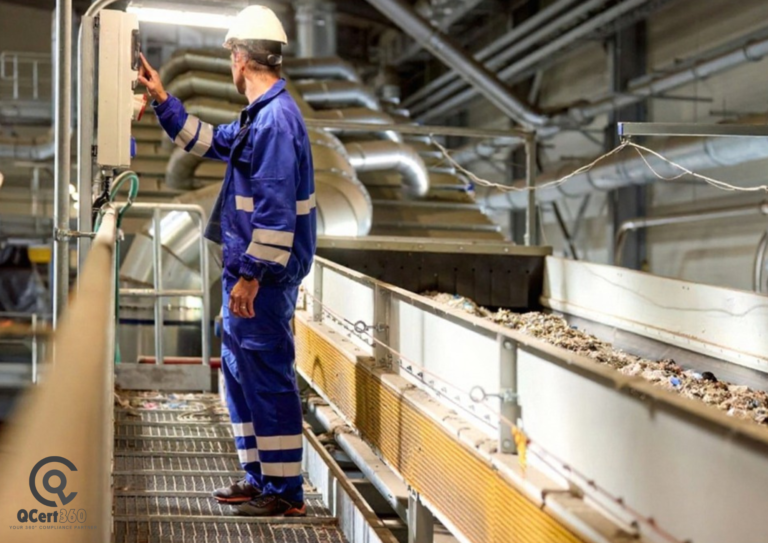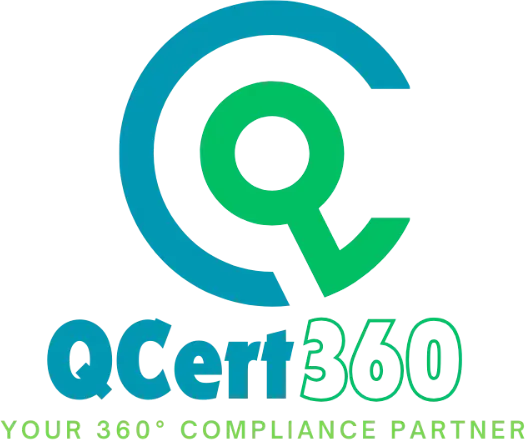
For years, facilities management (FM) has been treated like a necessary expense: keep the lights on, maintain the chillers, fix what breaks, and do it as cheaply as possible. The result? FM teams are trapped in firefighting mode, budgets get slashed, and the business never really sees the value they create.
ISO 41001 changes that conversation. It’s the first global facility management standard that asks FM leaders to align what they do with what the business is trying to achieve—cost efficiency, uptime, sustainability, user experience, compliance, resilience. Done properly, ISO 41001 certification turns FM from a cost centre into a strategic lever.
Whether you manage a hospital network in Saudi Arabia, a retail portfolio in the UAE, a university estate in the UK, or manufacturing plants in Germany, the USA, Canada, Australia, Singapore, Qatar, or South Africa, the playbook is the same: get structured, get data-driven, get integrated, and prove measurable value.
ISO 41001 in one line
ISO 41001 is a management system standard for facility management. Think ISO 9001 (quality) or ISO 14001 (environment) but built for FM. It gives you a framework to:
- Tie FM objectives to corporate strategy
- Standardize processes and service delivery (in-house or outsourced)
- Use KPIs and data (from CAFM/IWMS, BMS, energy platforms) to drive decisions
- Optimize lifecycle cost (not just today’s OPEX)
- Strengthen risk, compliance, and resilience
- Prove performance through audits, reviews, and continual improvement
Why FM leaders are moving to ISO 41001
1) Strategy first, not “fix-it-fast”
The standard makes you connect FM goals to business goals—think uptime for production, occupant well‑being, ESG targets, NPS for workspace experience, or lower total cost of ownership.
2) Cost savings that don’t backfire later
ISO 41001 pushes you to manage whole‑life costs. You stop making short-term savings that balloon maintenance, energy, and downtime over time.
3) Measurable KPIs, not anecdotes
You define and monitor KPIs that matter: planned vs reactive maintenance ratio, asset availability, mean time to repair (MTTR), energy per m², preventive compliance completion, SLA/OLA performance, tenant satisfaction, etc.
4) Better supplier performance
If you outsource FM, ISO 41001 gives you a backbone for SLA/OLA design, vendor evaluation, and performance reviews—with evidence, not opinions.
5) ESG, energy, and resilience built in
ISO 41001 plays nicely with ISO 14001 (environment), ISO 50001 (energy), ISO 45001 (OH&S), and ISO 22301 (business continuity). That’s increasingly important for boards and investors who want traceable sustainability and resilience metrics.
Real-world case study: From “keep it running” to strategic value (Gulf retail portfolio)
Organisation (anonymised): A regional retail property group operating 14 malls and mixed‑use assets across the UAE, Saudi Arabia, and Qatar.
Problem: FM was fragmented across sites and vendors. Decisions were cost-led, KPIs were inconsistent, energy use was rising, and tenant satisfaction was slipping. Corporate wanted a consistent model across all assets—and proof of value.
What ISO 41001 changed:
- Clear alignment to corporate goals
FM objectives were rewritten to match business priorities: reduce OPEX by 10% in 18 months, cut energy intensity (kWh/m²) 12% over two years, raise tenant satisfaction to >90%, and reduce unplanned downtime events by 30%. - One process, many sites
A single FM framework (processes, risk registers, SOPs, vendor SLAs, KPI dashboards) was rolled out across all assets. No more site-by-site improvisation. - Data-driven decisions
The group’s CAFM and BMS data was harmonised. They started reporting on:- Planned vs reactive maintenance ratio (moved from 38:62 to 70:30 in 12 months)
- Mean time to respond (down 26%)
- Energy per m² (down 14.2% portfolio-wide)
- Asset criticality and risk-based maintenance plans
- Lifecycle costing & CapEx discipline
Instead of “cheapest wins,” the procurement policy was re-written to mandate total cost of ownership (TCO). Replacement strategies were revisited for chillers, AHUs, and pumps—leading to smarter CapEx that cut long-term OPEX. - Vendor governance
A new vendor scorecard tied SLAs to real penalties/bonuses. Underperforming FM vendors were given improvement plans; two were replaced.
Results in 18 months:
- OPEX down 11.3% (without cutting core services)
- Energy intensity down 14.2% across the portfolio
- Reactive maintenance reduced by 42%
- Tenant satisfaction up from 82% to 93%
- Company secured ISO 41001 certification across all properties—used it in bid decks to win a flagship mixed-use asset in Saudi Arabia
FM was no longer “cost to control”—it was a documented value creator tied to business outcomes.
How ISO 41001 plays with your other systems
If you already run ISO 9001, 14001, 45001, 50001, or 22301, you don’t need to build ISO 41001 from scratch. The High-Level Structure (HLS) lets you integrate policies, procedures, audits, and management reviews into a single Integrated Management System (IMS). Lower audit fatigue, fewer documents, more coherence.
Where QCert360 comes in (and why it matters)
Most organisations can “get certified.” Few turn ISO 41001 into a strategic operating system that executives actually use. That’s where QCert360 stands out.
What we do differently:
- FM strategy translation
We translate your corporate goals into FM objectives, KPIs, and contracts that move the needle. - Crosswalks & integration
Already certified to ISO 9001, 14001, 45001, or 50001? We integrate ISO 41001 to reuse what you have—policies, audits, management reviews—so you don’t rebuild the house. - Vendor & SLA restructuring
We rewrite SLAs/OLAs so that suppliers’ success is measurable—and aligned with your outcomes (uptime, cost, CX, ESG). - Data you can manage
CAFM/IWMS and BMS are goldmines—if configured correctly. We design KPI frameworks and reporting cadences based on the data you actually have (and help you close the gaps you don’t). - Auditor-grade documentation without the fluff
Lean, evidence-based documentation that auditors respect and your teams can live with. - End-to-end certification support
Gap analysis → system build → training → internal audits → certification audit hand-holding.
If you want FM to stop being “the team that fixes things” and start being the team that funds growth, reduces risk, and hits ESG targets, ISO 41001 is your path—and QCert360 will get you there faster, with fewer internal headaches.
QCert360
Email: contact@qcert360.com
Phone: +91 7483870406
Tell us where you operate (UAE, Saudi Arabia, UK, USA, Canada, Australia, Singapore, Qatar, South Africa, Germany, or beyond), your current FM pain points, and we’ll outline exactly how ISO 41001 certification can pay for itself—in hard numbers, not slogans.
Your ISO 41001 roadmap (the practical one)
- Make the business case
Quantify avoidable OPEX, downtime, energy waste, and contract leakage. Your CFO will listen. - Define scope and stakeholders
Which sites? In-house + outsourced FM? Include tenant-facing services? IT/CAFM stakeholders? - Gap assessment
Compare what you have (processes, policies, KPIs, contracts) against ISO 41001 requirements. - Build the framework
- Policy and objectives aligned to business goals
- Risk & opportunity register (operational + strategic)
- Process maps & SOPs for all core FM services
- KPIs, dashboards, and reporting cadence
- Vendor governance model (SLAs/OLAs, scorecards, audits)
- Train & operationalise
Get FM teams, vendors, and stakeholders speaking the same language. Embed controls and KPIs in the CAFM/IWMS. - Internal audit & management review
Fix the gaps, prove performance, decide next cycle’s targets. - Certification audit
Bring the certification body in when the system is live and producing evidence.
FAQ's
1. What is ISO 41001 certification?
ISO 41001 is the international standard for Facilities Management (FM) systems, designed to improve efficiency, performance, and strategic alignment of facility operations.
2. Why is ISO 41001 important for facilities management teams?
It shifts FM from basic maintenance to strategic value creation by aligning people, processes, and spaces with organizational goals.
3. How does ISO 41001 improve operational efficiency?
By standardizing FM processes, reducing waste, optimizing resource use, and promoting proactive maintenance and lifecycle planning.
4. What types of organizations can benefit from ISO 41001?
Any organization with physical infrastructure—corporates, hospitals, schools, airports, factories, or government institutions—can benefit from structured FM under ISO 41001.
5. How does ISO 41001 support sustainability goals?
It encourages energy efficiency, waste reduction, space optimization, and improved environmental performance in facility operations.
6. What are the core requirements of ISO 41001?
Requirements include leadership commitment, needs assessment, FM strategy development, performance monitoring, risk management, and continual improvement.
7. Is ISO 41001 only for in-house facility teams?
No. It’s equally applicable to outsourced FM service providers who want to demonstrate service quality and management maturity to clients.
8. How does ISO 41001 affect employee productivity and satisfaction?
It creates well-managed, safe, and supportive work environments that improve employee comfort, safety, and performance.
9. How long does ISO 41001 certification take?
Depending on the organization’s complexity and readiness, certification can take between 3 to 6 months including audit preparation.
10. How can QCert360 help with ISO 41001 certification?
QCert360 assists in gap analysis, documentation, FM strategy alignment, and audit readiness to ensure successful ISO 41001 certification.


